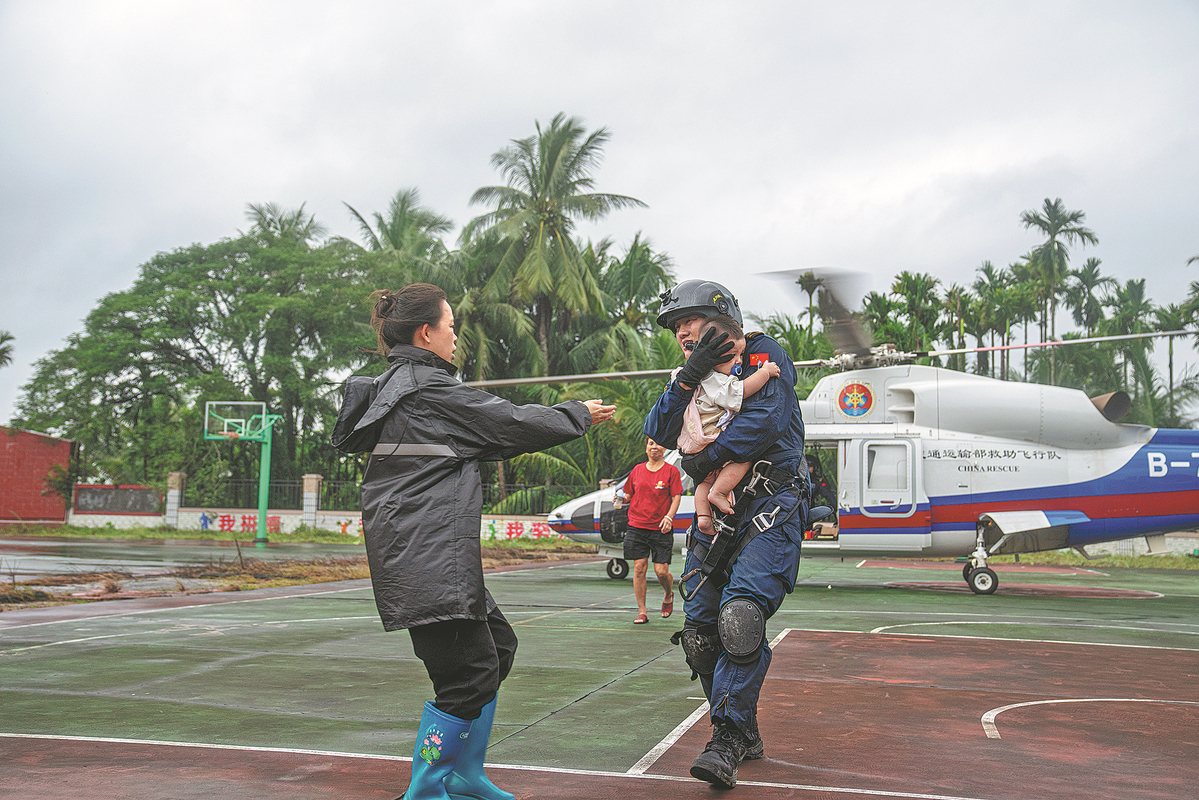Fall typhoons spark concerns in south
Provinces at risk take precautions, mobilize special rescue teams


With one powerful autumn typhoon having affected a Chinese province and another one bearing down on the mainland, concerns have mounted over the potential disasters from heavy rainfall that such storms can bring to vulnerable areas on the southern and southeastern coasts.
Authorities have been ramping up preparations to address the heightened risk of flooding and other weather-related hazards in such areas.
The remnants of Typhoon Trami, coupled with a cold front, have triggered extensive flooding in Qionghai, Hainan province. All 13 towns in the city have been inundated to varying degrees, with the Wanquan River basin submerging 183 villages.
Responding to the crisis, Qionghai has mobilized a fleet of 43 motorboats, 30 inflatable boats and over 200 vehicles, and has requested helicopter assistance for supply transport and rescue operations. By Wednesday evening, authorities had evacuated 17,198 residents.
Rainfall had decreased by Wednesday night, and water levels in the Wanquan River are gradually receding. The Hainan disaster reduction commission terminated its flood and wind emergency response on Thursday at 5 pm.
However, forecasts predict another deluge from Sunday to Tuesday as southeasterly airflow collides with a cold front.
Elsewhere, in anticipation of Typhoon Kong-rey's approach, China's State Flood Control and Drought Relief Headquarters has initiated a Level-IV emergency response in Zhejiang province.
China has a four-tier emergency response system, with Level I being the most severe.
Kong-rey, the 21st typhoon of the year, made landfall in Taiwan's Taitung at around 1:40 pm on Thursday, leading to the closure of schools and offices in 22 counties and cities across the island. By Thursday morning, 527 flights were suspended, eight were delayed and 139 ferries operating on 11 routes were canceled.



































